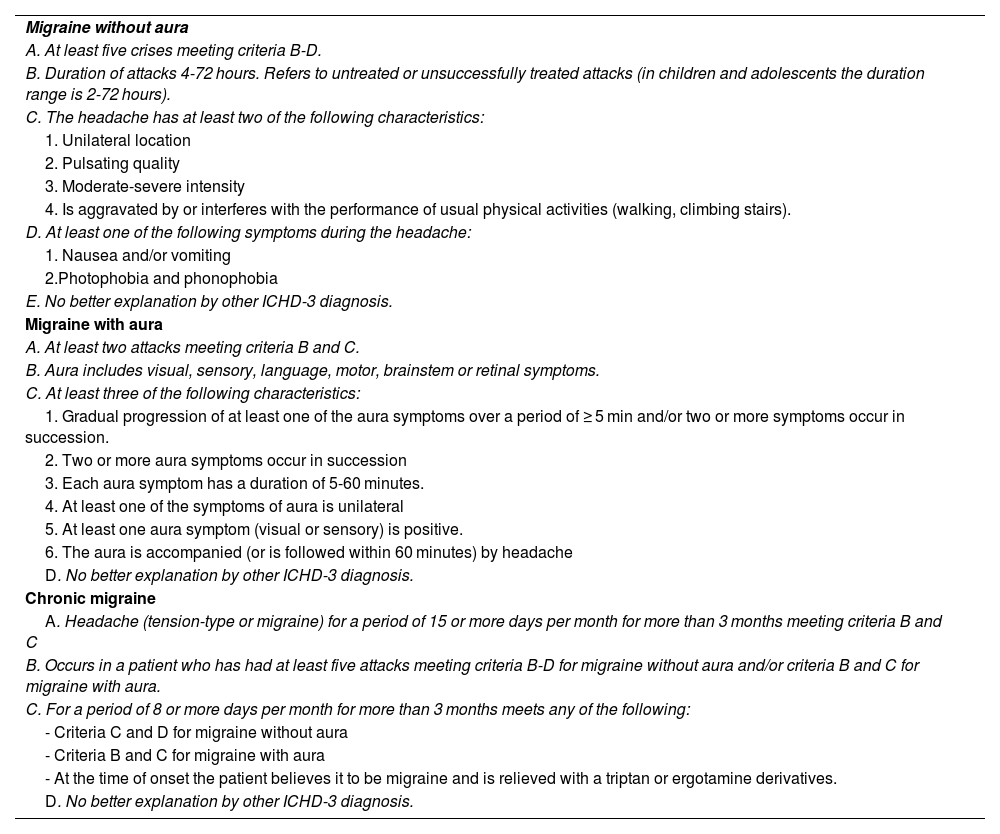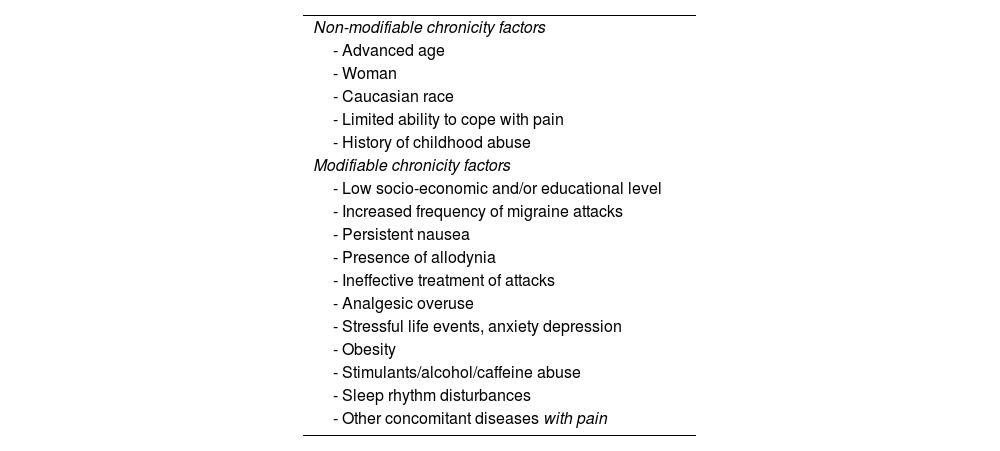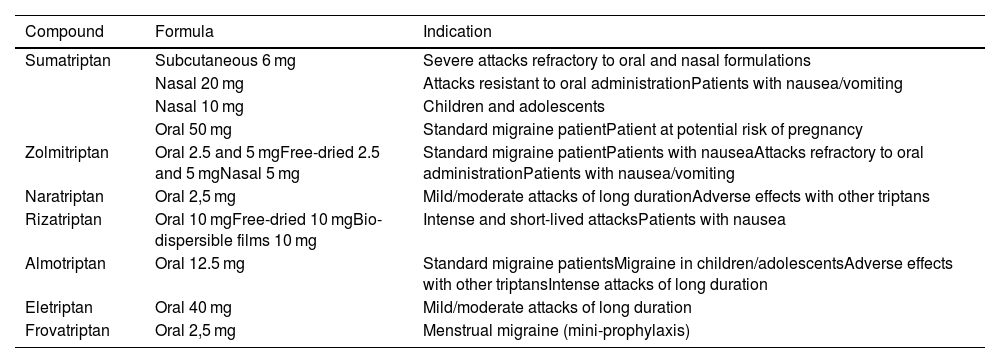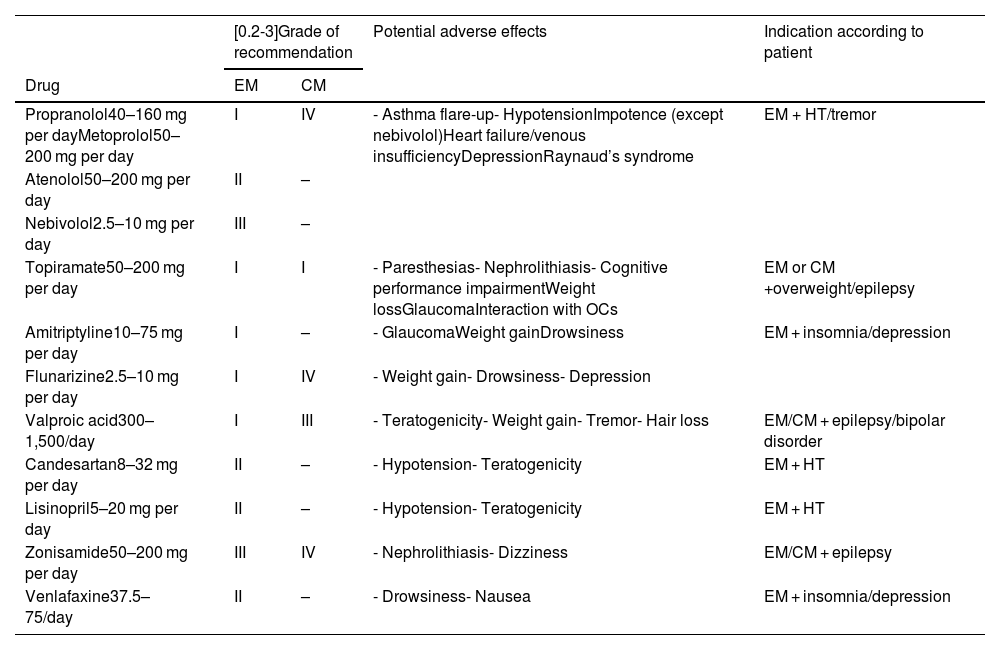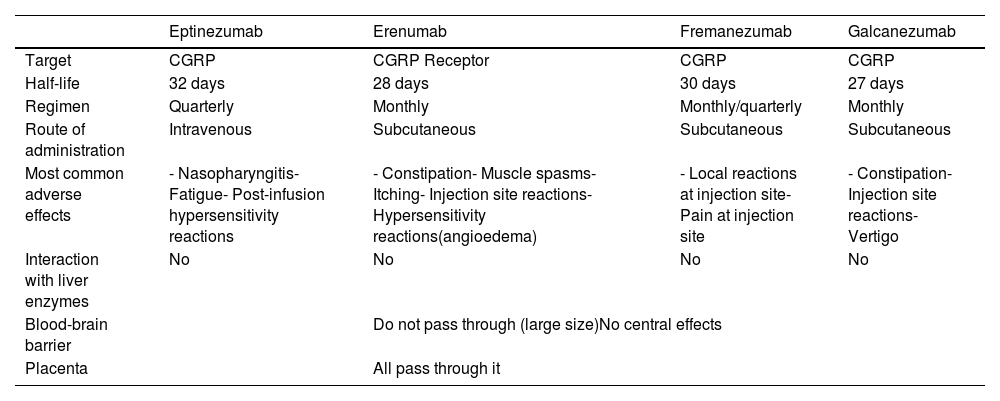Migraine is a disease with a high prevalence and incidence, in addition to being highly disabling, causing a great impact on the patient’s quality of life at a personal, family and work level, but also social, given its high expense due to its direct (care) and indirect (presenteeism and work absenteeism) costs.
The multiple and recent developments in its pathophysiological knowledge and in its therapy require updating and, therefore, in this article the Spanish scientific societies most involved in its study and treatment (SEN, SEMFYC and SEMERGEN), together with the Association Spanish Association for Patients with Migraine and other Headaches (AEMICE), we have developed these updated care recommendations.
We reviewed the treatment of migraine attacks, which consisted mainly of the use of NSAIDs and triptans, to which ditans and gepants have been added. We also discuss preventive treatment consisting of oral preventive drugs, botulinum toxin, and treatments that block the action of calcitonin-related peptide (CGRP).
Finally, we emphasize that pharmacological treatments must be complementary to carrying out general measures consisting of identifying and managing/deletion the precipitating factors of the attacks and the chronicizing factors, controlling the comorbidities of migraine and eliminating analgesic overuse.
La migraña es una enfermedad con una alta prevalencia e incidencia, además de ser altamente discapacitante, originando un gran impacto en la calidad de vida del paciente a nivel personal, familiar y laboral; pero también social, dado su elevado gasto debido a sus costes directos (asistenciales) e indirectos (presentismo y absentismo laboral).
Las múltiples y recientes novedades en su conocimiento fisiopatológico y en su terapia requieren una puesta al día y, por ello, en el presente artículo las sociedades científicas españolas más involucradas en su estudio y tratamiento (SEN, SEMFYC y SEMERGEN), conjuntamente con la Asociación Española de Pacientes con Migraña y otras Cefaleas (AEMICE), hemos elaborado estas recomendaciones asistenciales actualizadas.
Revisamos el tratamiento del ataque de migraña, que consistía principalmente en el uso de AINEs y triptanes, al que se han añadido ditanes y gepantes. También analizamos el tratamiento preventivo integrado por fármacos preventivos orales, toxina botulínica y tratamientos que bloquean la acción del péptido relacionado con la calcitonina (CGRP).
Finalmente, destacamos que los tratamientos farmacológicos deben ser complementarios a la realización de medidas generales consistentes en identificar y gestionar/eliminar los factores precipitantes de los ataques y los factores cronificantes, controlar las comorbilidades de la migraña y eliminar el sobreuso analgésico.







